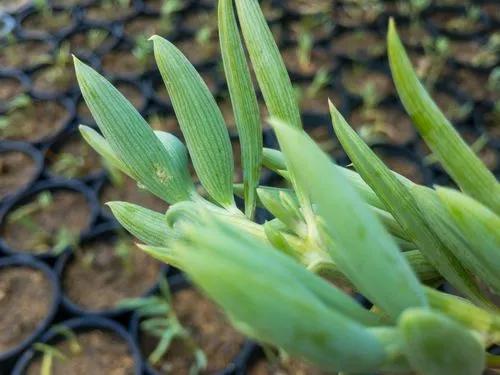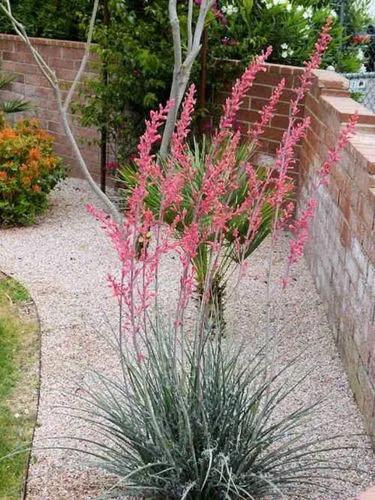Crassula expansa subsp. fragili is a delicate, untidy, sprawling perennial (or also annual) succulent herb with thin red-brown stems. Its small obovate leaves are hairy or glabrous, with hydathodes scattered on the upper surface. The small tubular white to mottled red flowers are borne in terminal clusters. This taxon shows a wide range of variation particularly in the size and shape of the vegetative organs. Plants vary from densely tomentose to glabrescent, the leaves vary from strongly dorsiventrally compressed to somewhat convex on both surfaces and pedicels elongate in some forms more than in others.Derivation of specific name: The specific and subspecific epithets, taken from the Latin “expansa”: expanding, spreading and “fragilis”: delicate, fragile, brittle.Stems: Stems several from a short woody base, up to c. 25 cm long, often purple-brownish below, herbaceous and green above, growing from a short, woody base. Subdichotomously branched, slender, usually puberulous or hispid everywhere (hairs acute, hyaline, spreading, denser and longer above), or sometimes glabrous towards the base, or rarely papillose-puberulous; internodes variable in length, often longer than the leaves.
Crassula 'fragilis' Care
Crassula Expansa



How to Care for the Plant

Water

It is a dry-tolerant plant. Water regularly in the growing season, but avoid water-logging and let dry between waterings. Water with caution in winter, as the plant can lose its roots if the soil stays cold and wet for extended periods. The lower the temperature the less water is needed. If grown in a container, bottom watering by immersing the container is recommended. Mist spraying is not needed, it must have very dry atmosphere.

Pruning

At the end of summer plants get quite long-shanked with dried flowering stalk and so is a good time of year to trim them back substantially.

Fertilizer

Feed it from mid spring to early autumn every four or five weeks with a fertilizer specifically formulated for cactus and succulents (poor in nitrogen), including all micro nutrients and trace elements diluted to ½ the strength recommended on the label. Do not feed plants during winter.

Sunlight

Does well in filtered sun, but can handle some shade, too. In shade the leaves colour will remain more green, while in harsh full sun conditions the foliage can develop a pinkish tinge. In summer keep cool and provide some shelter from direct sun during the hottest hours. It can be sunburned if moved from shade/greenhouse into full sun too quickly. It tends to get leggy in deep shade.

Soil

It grows best in sandy-gritty soil. Good drainage is very important as it is prone to root rot.

Temperature

Protect from frost to prevent scarring. It requires a minimum temperature of about 5°C, but will take a light frost and is hardy down to -5° C for short periods if it is in dry soil. USDA zones 9A – 11. In areas prone to frost, grow in an intermediate greenhouse or conservatory, in pots. The plant may be kept indoors throughout the year at a minimum winter temperature of 10°C not exceeding 18°C. In summer, the temperature will rise higher, but as this is accompanied by better light it does not matter. In colder climates plant this in a container, so it can be moved into a protected area when cold.

Popularity

331 people already have this plant 39 people have added this plant to their wishlists
Discover more plants with the list below
Popular articles






